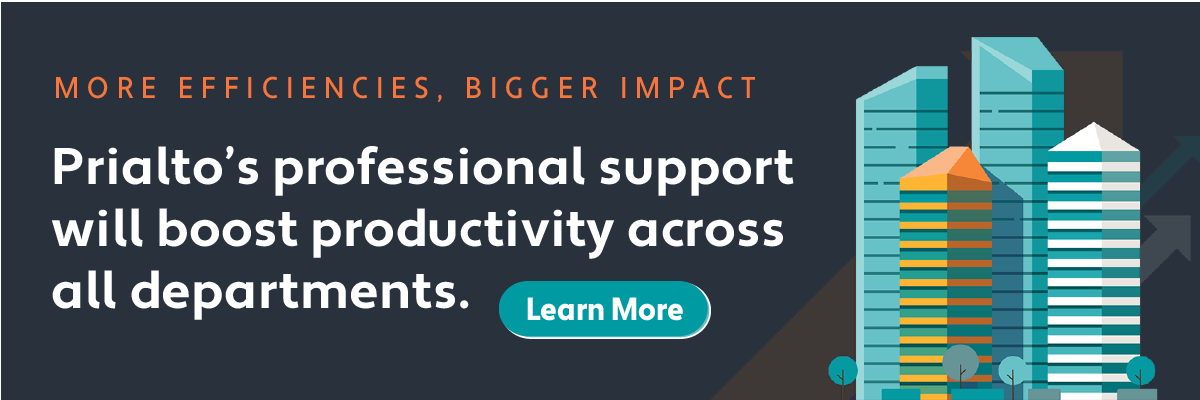Going through goal-setting exercises with your employees is one of the most effective ways to boost employee engagement. Gallup found that 69% of employees whose managers set goals with them are engaged compared to 8% whose managers don’t.
The difference is so profound because goal setting with employees has several benefits including:
- It gives employees a clear idea of what they need to focus on.
- It helps them better understand their performance.
- It makes them feel supported and like they play an important role on the team.
All of these benefits foster a more engaged, productive, and successful workforce than one that’s simply given tasks without a deep understanding of what they’re trying to achieve.
The key to effectively setting goals with employees is to go through a series of exercises to help them understand where their performance is now, what they need to achieve and how they’re going to get there.
1) Audit Past Performance
The first goal setting exercise you should do with your team is a performance audit. To set realistic goals, you need to know your starting point and approximately what kinds of improvements your team is capable of achieving.
Your audit should cover quantitative and qualitative factors including:
- Gross metrics
- Net metrics (if relevant)
- The improvement compared to the previous period
- Sources of positive results - did all people and projects contribute equally or were certain ones substantially more effective than others
- Sources of failure - what can you learn from them?
- Uncontrollable factors that affected performance (ex. Extreme weather, a sudden market downturn, etc.)
To complete this goal setting exercise, discuss all of those performance factors to get their insights on how they performed and why. This knowledge creates the foundation for you to create goals that leverage your team’s strengths and can be realistically achieved.
2) Choose Goal-Setting Objectives and Key Results (OKR)
OKR is a goal-setting methodology that was invented by Intel and is used by most of Silicon Valley because of the clear, measurable focus it creates. OKR consists of setting two types of goals:
- Objectives - These are the high-level goals that company leaders want to achieve.
- Key Results - These are what every individual needs to achieve to make the objectives a reality.
Start by choosing the 3-5 most important objectives you want your team to achieve. These objectives should be broad, high-level goals since they’ll be used as a springboard for your team’s key objectives.
Though the number is limited, it will drastically increase your team’s likelihood of success. According to Morten Hansen, author of Great at Work, high-performing companies choose the fewest possible goals and then obsess over them. This allows them to invest their time and resources into the initiatives that will have the biggest impact on their success instead of stretching their teams so thin that they fail to achieve most of their goals.
Once you have your objectives, work closely with your team to choose 3-5 key results per person that, combined, will achieve your objectives. Their objectives should be measurable goals that, ideally, they’re personally interested in pursuing.
As you choose your objectives and key results, consider your team’s past performance. To prevent low morale, your goals should be an ambitious but reasonable improvement from past results.
Related: How to Create Employee Development Plans that Inspire Success
3) Help Your Employees Create Execution Plans
Research shows that anywhere from 50-90% of strategic plans fail. Two of the biggest reasons for this high failure rate are:
- Unrealistic goals.
- Poor execution.
If you conducted an accurate performance audit and set strong OKRs, your plans won’t fail due to unrealistic goals but they can still fail from poor execution if you lack a strong plan to succeed.
However, instead of creating execution plans yourself, you should help your employees create plans for each of their key results. Since they’re doing the work, they’ll have a much more accurate idea of how long project components will take, what challenges they’re likely to face, and what resources they’ll need to succeed.
If they’re not accustomed to creating execution plans, you can guide them through this goal-setting exercise by prompting them to list out all of the activities they need to do to achieve their key results and assign a time estimate to each component.
4) Take Turns Playing Devil’s Advocate
Once you have your goals and execution plans, have each of your employees present their parts and ask the rest of the team to play devil’s advocate. Though it may be uncomfortable, having your team pressure test their goals is an effective way to identify weaknesses in their plans and make changes that set them up for success.
To keep your meetings productive and prevent people from getting defensive, set rules including:
- Ask constructive questions and suggestions. Ex. Why are you choosing to do X? I think you could complete your project faster if you did Y.
- Don’t criticize the individuals. If you disagree with part of their plan, explain why.
- Cap the amount of time spent on each person’s goals. This prevents the pressure testing process from taking an excessive amount of time.
Following the pressure testing meeting, have all of your employees revise their execution plans and submit them to you for final review before they start pursuing their goals.
5) Prioritize Your Goals and Have Contingency Plans
A key employee may leave, the market may take a turn for the worst, severe weather may disrupt your operations or some other unexpected event will make it challenging, if not impossible, to reach all of your goals on time. When that happens, what should your employees do? Should they put everything else on hold to try to repair the failing project or should they move on, and if so, what project should be their new priority?
Having contingency plans ensures that when things go unexpectedly wrong, which they inevitably will, your team can react in the most efficient way possible.
Even if creating robust plans may not be worthwhile for your team, it’s hugely beneficial to prioritize all of their goals so that when one starts failing or they just don’t have enough time to complete everything, they’re able to focus on the activities that have the biggest impact on your business.
To complete this goal setting exercise, post a list of your team’s goals in order of priority in a space where everyone has easy access. Include any exceptions or other conditions that affect the order of priorities.
Related: How to Avoid the Top 5 Strategic Planning Mistakes Leaders Make
6) Create a System to Track Progress
Research shows that creating a system to track goal progress is one of the most important goal-setting exercises. No matter how strong your goals and execution plans are, if you’re not using a tool to track results, you’ll have no idea if your team is successful or headed for failure.
If you don’t have a system yet, you can adopt a project management tool like:
Or continuous improvement/performance management tools like:
Which type of software you choose depends on your team’s specific preferences and needs. The key is that each employee adds their execution plans to the system and updates their progress weekly at a minimum. This ensures employees know what they have to do to achieve their goals and lets you step in to offer additional support if a project is falling behind.
About the author: Emily formerly led Prialto's content production and distribution team with a special passion for helping people realize success. Her work and collaborations have appeared in Entrepreneur, Inc. and the Observer among others.

